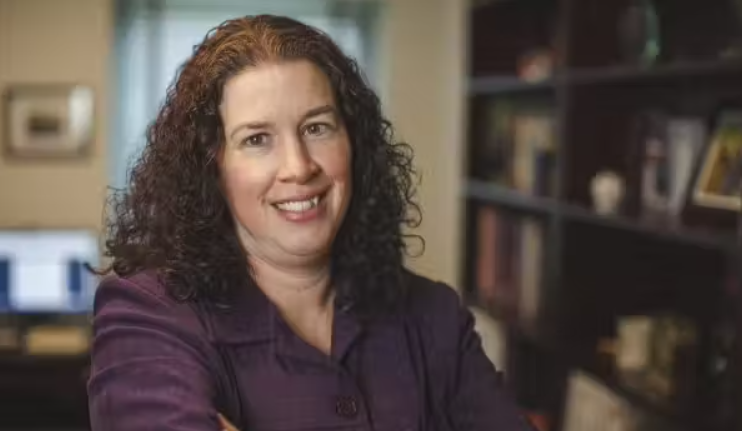
Dawn Lindsay, Ph.D, is the Director of Research and Evaluation at IRETA. Dawn and her team have been working with the American Society of Addiction Medicine (ASAM) and the American Academy of Addiction Psychiatry (AAAP) this past year to develop a clinical guideline addressing the management and treatment of stimulant use disorders. This project is a part of a long-term partnership with ASAM in which IRETA has assisted with the development of three clinical guidelines up to this point. In addition to this guideline, Dr. Lindsay and her team have also worked with ASAM on guidelines for alcohol withdrawal management and the role of urine testing in substance use treatment facilities.

IRETA’s work with ASAM on these guidelines is an important contribution to addiction treatment and the overall field of medicine. Evidence-based guidelines help ensure that clinicians have the most effective tools to treat different aspects of substance use disorders and create a universal standard for the field. Outcomes are based on clinical experience and extensive research.
Dr. Lindsay took time away from her busy project schedule to answer some questions about the latest clinical guideline on the treatment of stimulant use disorders.
Can you briefly describe the project we are currently working on with ASAM?
We are working with a team of clinical experts from ASAM and the AAAP to develop a clinical guideline for the diagnosis, management, and treatment for stimulant use disorders. There currently is very little evidence in the way of treatment guidelines out there specifically for stimulant use disorder. The Substance Abuse and Mental Health Services Administrations (SAMHSA) does have a guideline that we are using for a clinical resource. Hopefully the addition of this guideline we are developing will be able to better help the field.
Something that is unique to our current project is the collaboration with the American Academy of Addiction Psychiatry (AAAP). The collaboration of these two major professional organizations allow us to utilize expertise from both fields of addiction medicine and addiction psychiatry.
Can you talk a little bit about the work IRETA has done with ASAM in the past?
We have really built a nice collaboration with ASAM. This is our third major project developing a clinical guideline with them. The last one was on alcohol withdrawal management. Our first major project with ASAM was developing a guideline for the appropriateness of drug testing in treatment for substance use disorder. I was actually very surprised at how little evidence there was to support drug testing. People assume that because it’s done so routinely, there must be a good reason for it. But based on our research, there’s relatively little evidence to support positive outcomes from the practice.
The way we work when there is little evidence to go off, is to instead rely on experts in the field. ASAM chooses clinical experts for our project committee based on their knowledge. These experts have all been ASAM members at some point and are well-regarded and published in their field with a wealth of clinical expertise and knowledge. For the stimulant use disorder treatment guideline, there are 12 experts on the committee. Half of the committee come from ASAM and the other half come from AAAP.
How does the work we are doing on the clinical guideline addressing management and treatment of stimulant use disorders relate to the past work we have done with ASAM?
For the current guideline on the treatment of stimulant use disorders, we are using a different methodology than we have in the past. For this project, we are using the GRADE methodology. Consensus in this methodology comes from a ranking system and is probably more well-known than the RAND UCLA methodology, which was used in our previous guidelines. This is a completely different project than we have done in the past, but ASAM has come to respect us and what we are able to bring to these projects, no matter what type of methodology is being used.
What does the process of creating a detailed clinical guideline look like?
These projects are very labor intensive. From start to finish, they typically take about two years of work. First, we begin by discussing the scope of the project. This is a very important aspect because we discuss all the parameters and develop what will essentially become the literature review. We ask questions about who we want to include in the research and what countries we are looking at research from. Audiences in the United States don’t want to hear about medications that aren’t approved for use in this country. So, establishing those parameters at the beginning of the project is important.
The next step is reviewing the literature. This is time consuming and also very labor intensive. We condense the information from the literature review for the committee members in a way that’s easy for them to digest with their busy schedules. We rely on tables, graphs, and other elements that are easy to interact with. There are extensive sub-committee meetings held to discuss the evidence and draft the clinical recommendations. We then organize those in a way that makes the most sense for other clinicians to consume. There is even a lot of discussion around they way to order things (assessment needs to come before diagnosis, etc.).
The last major step of the guideline process is actually pulling together the document including the clinical guidelines and all the background information. Finally, the full document is sent out for external stakeholder review. ASAM will invite additional experts and organizations to review the document and make suggestions. They will put it on their website for public comment. This feedback phase usually lasts 3 to 4 weeks.
We then conduct meetings to review all the feedback and whether we’d implement suggestions based on it and how. Getting feedback and including suggestions we receive is very important. If organizations aren’t given the opportunity to give feedback, they’ll be less likely to promote the finished product with their memberships. Giving them a chance to weigh in helps establish the legitimacy of the final document.
These projects are time consuming, but you can’t rush them. For example, if we tried to rush the literature review, we would end up having a bigger problem down the road we’d have to go back and correct. It is well worth the time and care.
What is the importance of these detailed guidelines? Are they only important in addiction treatment, or do they have use in the overall medical field?
People who are not in the field of addiction medicine would be shocked to know how little evidence-based information there is for different treatment methods. A lot of addiction treatment facilities are operating on methods not at all based on empirical evidence. These guidelines have already, and will continue to fill a void that is present in many different areas of addiction medicine treatment. They provide a bridge to the literature that many people, clinicians included, don’t have access to.
The guidelines provide an anchor that clinicians and treatment facilities can base their addiction medicine practice in. Value is being added and major gaps that are present in the field are being filled. They are also very important for places that aren’t strictly addiction medicine facilities. The alcohol withdrawal guideline can serve as a useful tool in hospital and emergency room settings where people present with alcohol intoxication. We hope that guideline has provided these spaces with guidance as well.
How has our overall work with ASAM helped contribute to a “universal toolbox” for the addiction treatment field?
Addiction treatment providers want to know that the interventions they are using work. Being able to rely on these tools and say that evidence shows it works and improves the quality of treatment is a goal everyone should have, and is our mission at IRETA. The alcohol withdrawal guideline included evidence that showed withdrawal can be managed in outpatient settings more than what was previously assumed. If you don’t need to have a person in an inpatient setting, it improves treatment quality and ease for patients, as well as making things easier from a provider perspective. Making these evidence-based practices more universal will help improve addiction treatment across the country.
We greatly appreciate ASAM’s investment in IRETA and its mission. We have worked very hard over the past number of years to build this ongoing collaborative relationship and we are very excited to work more with them in the future.
**This article was featured in the 2021-2022 IRETA Annual Report. You can view the full report here.**





